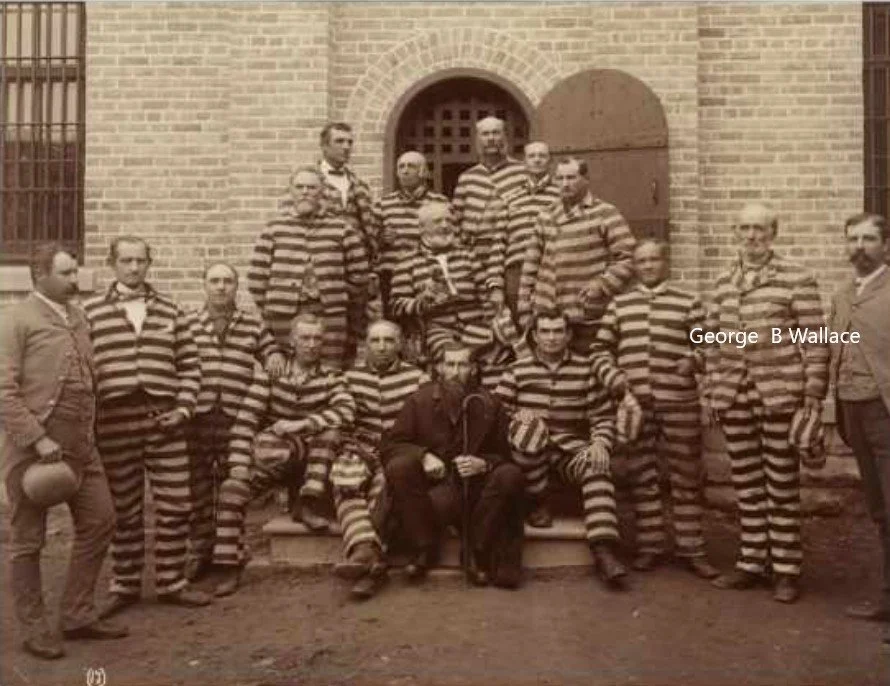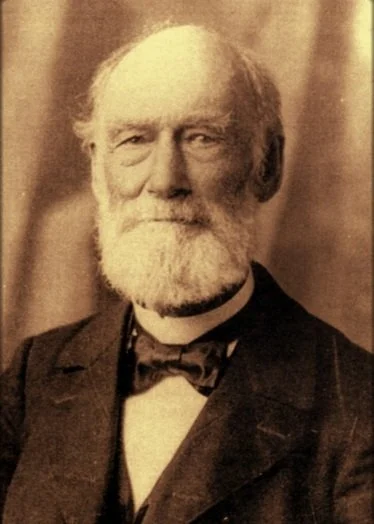George B. Wallace’s Family Legacy: many Homes-Polygamy
Timeline: George B. Wallace & 1st wife Mary C. McMurphy
Feb 16, 1817 — George Benjamin Wallace is born in Epsom, New Hampshire.
Apr 22, 1818 — Mary C. McMurphy is born in Boston, Massachusetts.
Feb 13, 1840 — George and Mary marry in Northwood, New Hampshire.
1840–1842 — They live in Boston, where George works as a carpenter and building contractor.
Dec 1842 — George is baptized a member of the Church of Jesus Christ of Latter-day Saints during a time of severe persecution for church members.
1833–1839 (context) — Latter-day Saints were driven from Jackson County, Missouri (1833); from Missouri entirely by the 1838 “extermination order”; and later from Nauvoo, Illinois (1846).
Mar 10, 1845 — George separates from Mary and their children in Boston and marries Melissa Crowell (a young widow) on Jun 4, 1845, without a formal divorce.
1845–1847 — George returns to Nauvoo, Illinois, and remains committed to the faith despite increasing threats.
1847 — George immigrates west with Melissa Crowell Wallace in a pioneer company, arriving in Utah that year.
Mar 31, 1852 — After serving a mission in England, George returns to Boston hoping to reconcile with Mary, but her family refuses to let her join him.
1853 — Mary C. McMurphy Wallace dies in New England, never joining George in Utah.
George B. Wallace’s Legacy of Family
Before the courtroom drama of 1887, George Benjamin Wallace had built a remarkable family legacy on the Utah frontier. Like many early Latter-day Saint pioneers, he entered into plural marriage — a practice of deep faith and sacrifice that shaped the settlement of Granger and beyond. Over the years, George married five wives and fathered dozens of children, creating a large, interwoven family whose descendants carried his name and spirit into the next century. Here’s how his family branches came together:
George Benjamin Wallace (1817–1900): A Stalwart Pioneer and Patriarch
George Benjamin Wallace was born in 1817 and came west among the earliest pioneers who helped settle the Salt Lake Valley. He built his life on hard work, faith, and family — and in doing so, he helped build a community that would grow for generations.
George married five wives over the course of his life, practicing plural marriage as was common among early members of The Church of Jesus Christ of Latter-day Saints.
With Mary, he had three children before her passing in 1853- They separated in 1845-she and the 3 children stayed in New England
With Melissa, he raised six children.
With Martha, he welcomed twelve children into the world.
With Hannah, he and his family grew by fourteen more.
With Lydia, he had ten children before she passed in 1869.
George’s large family worked the land, built homes, planted orchards, and helped form the backbone of early communities like Granger. His legacy includes generations of hardworking descendants who remember him as a man who faced the challenges of pioneer life head-on.
He lived to the age of 83, passing away in 1900, leaving behind not just a large posterity, but a story woven into the roots of West Valley City’s earliest days.
A Test of Faith and Law: George B. Wallace’s 1887 Polygamy Trial
In the winter of February 1887, George Benjamin Wallace — then nearly seventy years old — found himself at the center of a federal court case testing the limits of Utah’s anti-polygamy laws. Like many early Latter-day Saint pioneers, George had entered into plural marriage decades before, raising large families and helping settle early communities like Granger.
The indictment charged George with unlawful cohabitation, naming his wives Hannah and Martha. Both women took the stand in his defense. Hannah testified that during the period in question, her husband had lived with her in Granger — but that Martha, her own sister-wife, did not live there at all. Martha confirmed she lived in Salt Lake’s 17th Ward and that George had not made his home with her for six years. She explained that he would stop in occasionally to visit his children but did not reside with her as a husband.
The jury listened carefully. George’s daughter Mary testified too, affirming that he had not stayed with Martha during that time. Even the prosecution, seeing the case unravel, asked for a delay to find new witnesses but could not make the evidence stick.
In the end, the judge instructed the jury to find George not guilty — a rare outcome at a time when many men were imprisoned under federal anti-polygamy prosecutions. George B. Wallace went home that day “rejoicing,” spared prison in his final years.
This brief trial reflects not only George’s personal story but a larger chapter of Utah history — when questions of faith, family, and federal law collided on the frontier.


